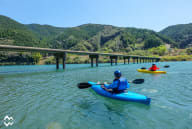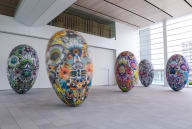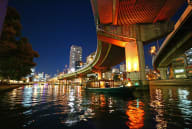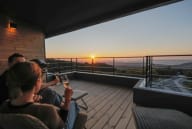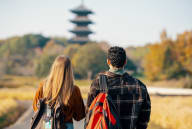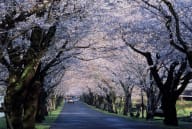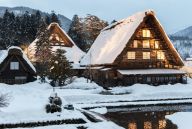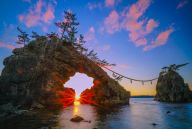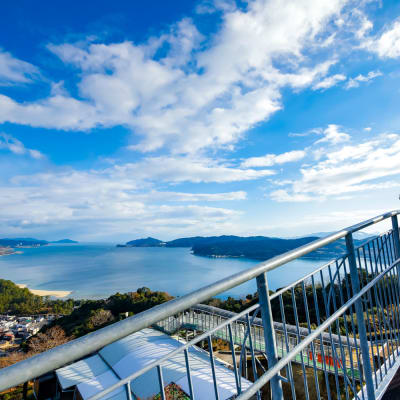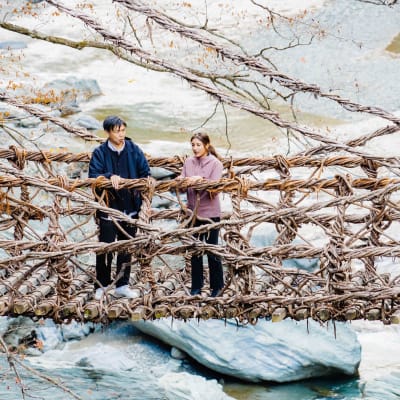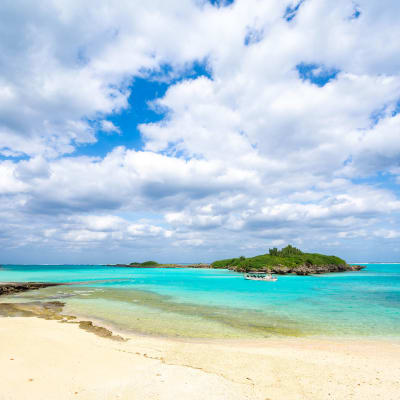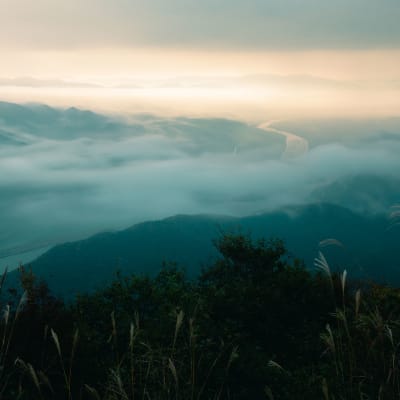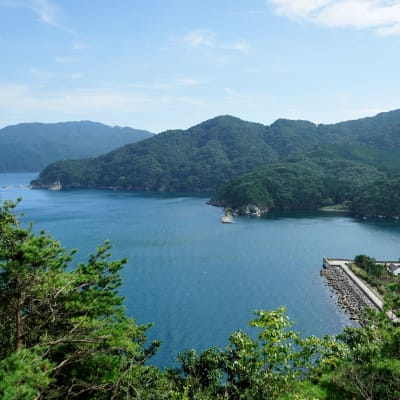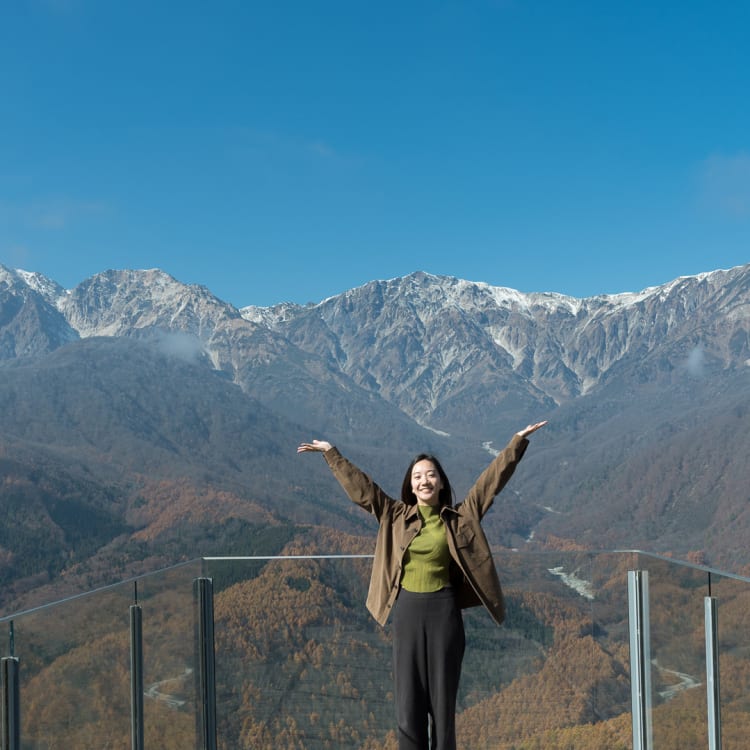
Sustainable Destinations A Path to Sustainable Coexistence in Hakuba Village and Teshikaga Town
Across Japan, efforts toward realizing a sustainable society while preserving the natural environment are steadily progressing. In Hakuba Village, nestled within the stunning landscapes of the Northern Alps, a multifaceted approach is being pursued, including not only nature conservation but also the introduction of clean energy, the preservation of local culture, and the promotion of universal design. Meanwhile, in Teshikaga Town in Eastern Hokkaido, a harmonious ecosystem is being built by balancing nature conservation in the Akan-Mashu National Park with the needs of the local community and tourism. These initiatives have gained international recognition and are drawing widespread attention. The practices of both regions offer valuable insights for a sustainable future, serving as models of coexistence between nature and local communities.
Hakuba Village (Nagano)


Sustainable Harmony in the Embrace of Hakuba Village
Situated amid the dramatic peaks of the Northern Alps, Hakuba Village is a harmonious blend of stunning natural beauty and vibrant cultural heritage, making it one of Japan’s most renowned mountain resorts. Its clear air and pristine water not only captivate visitors but also underpin efforts to secure a sustainable future for the region. Hakuba is renowned for its efforts to protect the natural environment, embrace clean energy, preserve local culture, and promote universal design, earning recognition as a place to be cherished for generations to come.
Intrigued by these efforts, we visited Hakuba to uncover the stories behind its sustainable vision.
Sustainability Spotlight

Toshiro Maruyama
Mayor of Hakuba Village
Born and raised in Hakuba, Toshiro Maruyama has dedicated his career to fostering the town’s growth and sustainability. After working at Oriental Land and spending time on a working holiday in Australia, he returned home in 2009 to manage his family’s inn, Shirouma-so. Under his leadership, the inn achieved international acclaim, winning the World Luxury Hotel Awards' global title in 2012. Elected mayor in 2022, Maruyama now leads Hakuba’s efforts to balance tourism, community development, and environmental stewardship.
A Conversation with Toshiro Maruyama
We sat down with Toshiro Maruyama, Hakuba’s mayor, to learn about the initiatives shaping the future of this picturesque town. Nestled in the embrace of the Northern Alps, Hakuba has become a leader in Japan’s climate action efforts—a journey sparked by the passion of local high school students.

“It all started when students from Hakuba High School raised their voices about climate change,” Maruyama explained. “They organized a parade to the village office and submitted a proposal, which eventually led Hakuba to become the first village in Japan to declare a climate emergency. This wave of action paved the way for our zero-carbon city declaration and the development of a detailed sustainability roadmap.”
Hakuba’s dedication to sustainability extends across various sectors. “Our ski resorts and accommodations have transitioned to renewable energy,” Maruyama shared. “For instance, Hakuba Happo-One and Hakuba Goryu Ski Resorts are actively incorporating renewable energy into their operations. We’ve also established an extensive network of EV charging stations, making Hakuba one of Japan’s most accessible eco-friendly destinations.

Hakuba Happo-One Snow Resort
Maruyama also highlighted the village’s connection between agriculture and tourism. “Farm stays offer fresh produce grown in local fields, creating an authentic bond between visitors and the village. This commitment to local production and consumption contributed to Hakuba’s recognition as a Best Tourism Village.”
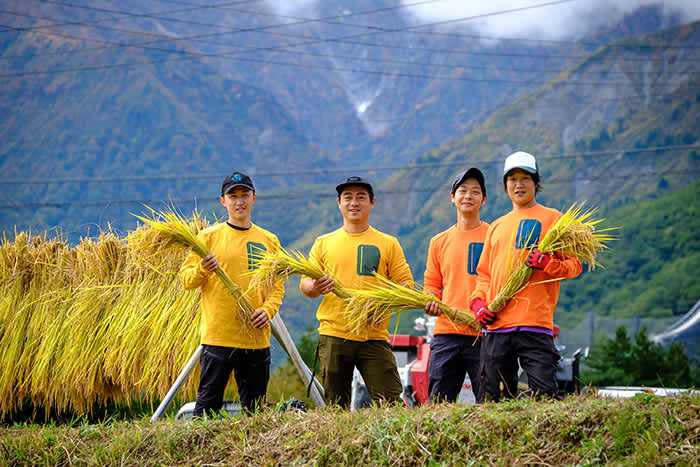
Farm Experience in Hakuba Village
To preserve Hakuba’s iconic snowy landscape, the village has banned large-scale outdoor solar panels, focusing instead on roof-mounted panels and small-scale hydropower. “This approach minimizes environmental impact while respecting our natural environment,” he added.
Finally, Maruyama emphasized the importance of cultural preservation. “In the Aoni District, residents host workshops to maintain traditional mud walls and stone structures, fostering a deeper appreciation for Hakuba’s heritage. Passing down our natural and cultural treasures to future generations is Hakuba’s mission,” he concluded.
Inspired by Mayor Maruyama’s words, we set out to immerse ourselves in the natural beauty, cultural heritage, and local flavors of Hakuba Village. Here’s what we discovered during our stay in this remarkable region.
Exploring Hakuba Village
Minshuku Origins: Hakuba Happo Region
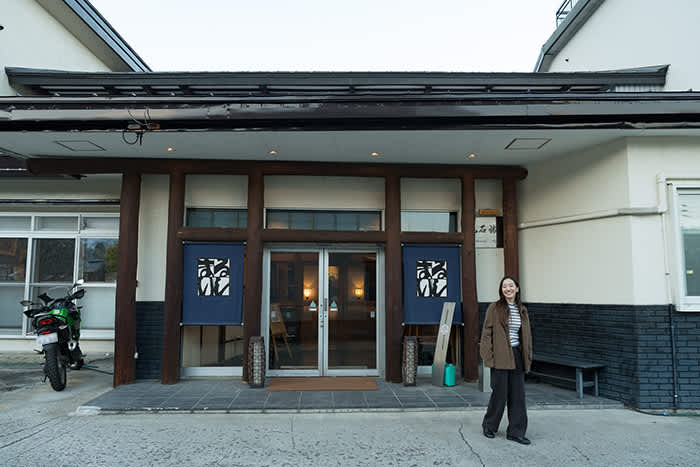
Entrance of Maruishi Ryokan
The Hakuba Happo area is the birthplace of Japan’s minshuku tradition, family-run inns that offer guests a homely atmosphere and local cuisine. Maruishi Ryokan carries on this legacy with pride. Operated by the Otani family for generations in this region, the inn is now run by the fourth generation. Guests are treated to homegrown rice and fresh vegetables cultivated directly in the family’s fields, complemented by other locally sourced ingredients.
In addition to its culinary offerings, the ryokan boasts a direct connection to the renowned Hakuba Happo Hot Springs (onsen), natural hot spring baths prized in Japan for their mineral-rich waters and soothing properties. “Preserving the minshuku tradition is our way of honoring Hakuba’s history and creating a sense of community for our guests,” shared the current innkeeper.

Hot springs in Maruishi Ryokan

The lobby space where long-term stay visitors foster their community
Adventures at Hakuba Iwatake Mountain Resort

Scenic path up the mountains
Hakuba Iwatake Mountain Resort is a paradise for outdoor enthusiasts. Between spring and autumn, its vibrant trails invite exploration through lush forests, offering panoramic views of Hakuba’s iconic peaks. The terrace café at the summit, overlooking the Hakuba Sanzan mountains, provides a peaceful spot to enjoy a cup of coffee while taking in the awe-inspiring scenery.

Views from the scenic terrace
Winter transforms the resort into a snowy playground, offering skiing and snowboarding opportunities that attract visitors from around the globe.
Connecting with Hakuba’s Pure Waters

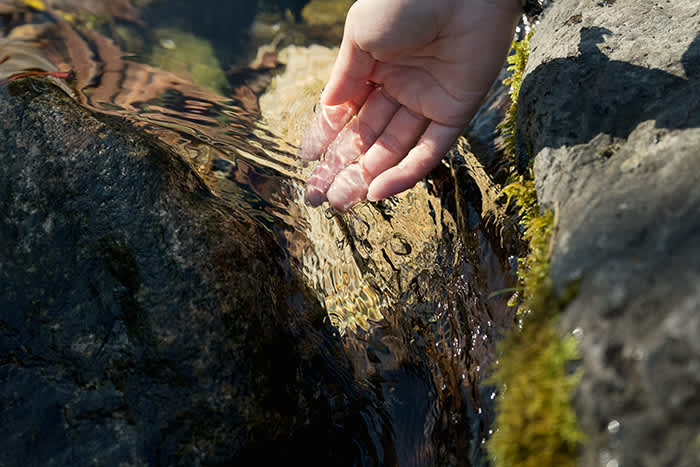
Hakuba’s pure waters
The pristine waters of Hakuba sustain both life and leisure. A stroll through the village reveals crystal-clear streams and hot spring foot baths (ashi-yu), small basins of warm water where visitors can soak their feet—an ideal way to rest during a leisurely walk. Yakushi no Yu, a popular spot, is surrounded by historic stone statues and a serene atmosphere that invites relaxation and reflection.

Foot bath, Yakushi no Yu
Seasonal Delights: Hakuba’s Cold Soba

Hakuba’s Shin-Soba
Autumn in Hakuba brings the celebrated Shin-soba, buckwheat noodles made from the year’s first harvest. In Shinshu (the Nagano region), Shin-soba is particularly valued for its richer aroma, brighter color, and deeper flavor compared to noodles made at other times of the year. Served with a dipping sauce and garnished with green onions and wasabi, the delicate noodles are enhanced by the pure spring water used in their preparation. This limited-time treat, available from mid-October to early November, offers a true taste of Hakuba’s seasonal bounty.
A Shared Path to Sustainability
The passion for sustainability and innovative efforts we encountered in Hakuba demonstrate how a community can seamlessly harmonize cultural heritage, natural beauty, and economic growth. These initiatives remind us that sustainability is more than preserving what exists—it’s about cultivating a culture of care, connection, and stewardship that can inspire future generations.
Every taste of Shin-soba, every moment spent soaking in warm ashi-yu, and every story shared with locals felt like a step toward a brighter, more balanced future. Hakuba’s vision inspires not just its residents but also those who visit, inviting all to play a part in creating a sustainable world built on respect and appreciation for the treasures we share.
Links
Hakuba Village (Tourism Commission of Hakuba Village)
Teshikaga Town (Hokkaido)


Teshikaga: Where Wilderness and Community Thrive Sustainable Tourism in East Hokkaido
The charm of Teshikaga in East Hokkaido is instantly apparent; wilderness. Deep forests, vast lakes, hot springs and abundant flora and fauna (often in the form of a herd of deer sauntering across the road in front of your car), much of which is located within Akan-Mashu National Park.
In 2023, the area gained global recognition as a Top 100 Sustainable Tourism Destination due to dedicated efforts to cultivate a tourism ecosystem that protects local wildlife and nurtures an environment where nature, locals and tourism can coexist and thrive. These ideals sparked the town’s slogan, ‘A place you want to visit, a place you want to live.’
Sustainability Spotlight

Sanae Kinase
Sustainability Coordinator, Teshikaga Town
Originally from Nara Prefecture, she moved to Teshikaga at the age of 19 in 1996. For 20 years, she co-managed an outdoor adventure company and earned a travel service management certification. Later, she founded the non-profit TESHI-COLOR to promote regional development and the SDGs, serving as its representative director. As Teshikaga's Sustainability Coordinator, she is committed to fostering a sustainable tourism destination.
I had the opportunity to speak to Sanae Kinase, Sustainability Coordinator for Teshikaga Town, who shared with me the community efforts that have made Teshikaga ecotourism exemplary. “Teshikaga once hosted as many as 730,000 overnight visitors every year, but with the economic downturn, the number of tourists dropped sharply,” she says. In response, around 70 other locals created the Teshikaga Eco-Machi Promotion Council which works to develop the town into a place they could be proud of. “This council is comprised of eight dedicated committees,” she says. “Each have specialised initiatives, such as developing the local food culture or advancing ecotourism.” To ensure the community can continue to work together on building a sustainable tourism ecosystem, the Teshikaga Eco-Machi Promotion Council are engaging the next generation through vocational tourism courses and internships.
These local efforts in Teshikaga also played a key role in the National Park Enjoyment Project, a nationwide initiative involving the Ministry of the Environment and local governments. This has led to the development of new tourist spots, the demolition of abandoned hotels, and several other projects, bringing noticeable changes to both the area's landscape and the mindset of its residents.
To witness these efforts for myself, I travelled to Kawayu Onsen in Teshikaga. This small hot spring town lies at the foot of the imposing Mt. Io, where more than 1,500 fumaroles emit volcanic vapour.
I was greeted by a certified guide at the foot of the mountain. As part of the Teshikaga Eco-Machi Promotion Council’s efforts to ensure the protection of the mountain, its wildlife and the people who climb here, it manages a Certified Guide System. Through this system, local guides undergo training and certification. Climbers can only access the mountain if they are accompanied by a certified guide. A portion of the guide fee is reinvested into local conservation funds.
“Today we’re hiking to Bear Trap Crater,” she told me. He assured me that, despite the enormous plumes of steam rising from the mountain, the volcano is closely monitored 24 hours a day and she would receive an evacuation notice immediately if any changes were detected.
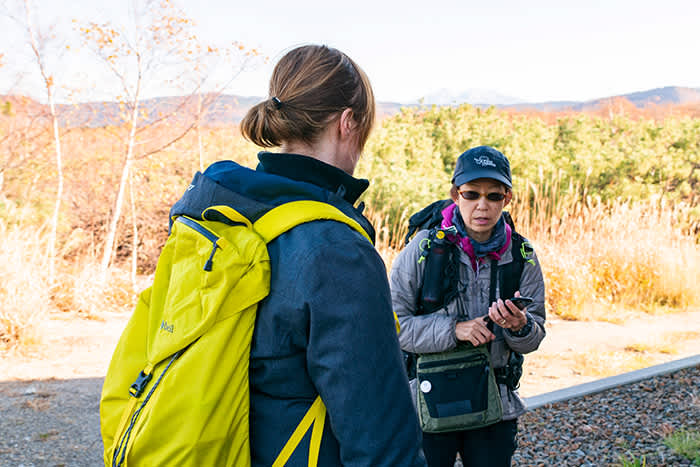
A safety briefing before we climb
She also gave me a briefing on bears. The guides track bear sightings to understand their patterns. Whenever bears are spotted, the area is closed until the area is deemed safe. These measures protect people just as much as they do bears, ensuring we can enjoy Teshikaga in harmony with nature.

A hidden trail to the crater
I followed her to a hidden trail. “This is the trail deer use,” she said. I couldn’t see a trail, but she deftly followed the path, first trodden by the hooves of Ezo deer who know this area well. By only permitting guided hikers to walk these trails, they remain virtually untouched, and the lack of foot traffic means the local wildlife continue to use the same paths. There was something beautiful and equalising about sharing this winding path with wildlife.

Alpine plants on the mountain
The trail took us through an area of scrubby alpine plants before we reached a dense forest of maple and birch. She showed me signs of when the mountain had been a sulphur mine from the late 1800s until 1963; such as tangled tracks enmeshed with and reclaimed by the trees growing around them.

Mangled metal tracks from when the mountain was a sulphur mine
As we climbed, the landscape became more barren, where sulphur fumes had made the earth inhospitable for many plants. “It’s the diversity of this climb that people enjoy,” she told me. We picked up our pace through a gully in the mountain, a potential danger zone for falling rocks. Once we’d climbed out of the gully, we looked back at the views of the area; mountains and forests framed by volcanic vents.

A large piece of sulphur
As we climbed, the chunks of sulphur on the ground grew from small pebbles to big, glittering rocks. I admired and photographed them, but returned them to their mountain home. “We mustn’t take anything from National Parks”, she reminded me.

At Bear Trap Crater
From the crater, we admired the views over Kawayu Onsen town and a snow-capped mountain in the distance before we set off back down, pushing through branches as we walked down the steep, muddy trail. Not far from the crater, she pointed out Fumarole number one, the mountain’s biggest and most impressive fumarole. “It’s perfectly safe to breathe the air here,” she assured me, “because it’s mostly steam that these fumaroles emit.”

Fumarole Number One
Teshikaga’s volcanic charms extend beyond its onsen baths and fumaroles. My next stop was Lake Kussharo, Japan’s largest caldera lake, for an afternoon of Canadian canoeing. Though the lake is huge, we appeared to be the only people on it. Our canoe glided into glass-like water and skimmed through the water like a hot knife in butter. Blissful.
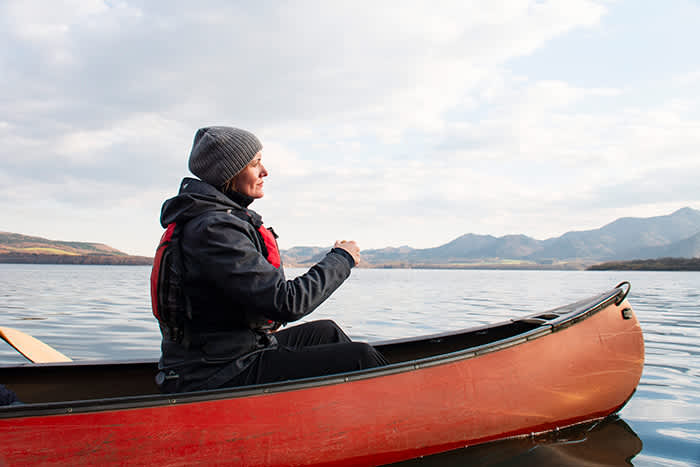
The only people on Japan’s largest crater lake
I noted to the canoe guide that I couldn’t imagine seeing such pristinely clean water in my hometown. Aside from our canoe, there were no traces of humans having ever discovered the lake. “Locals take pride in the area,” he told me. “They'll clean up areas to make them prettier, pick up trash and ensure Teshikaga is pristine.”

Canoeing the calm waters of Lake Kussharo
As I took in the colours of the shoreside maples, I caught sight of a mink, just as it caught sight of us. “An invasive species,” my guide tells me. The balance of nature is paramount in Hokkaido. National Park teams work to protect endemic species by protecting their habitats and monitoring invasive species.
came to the small beach there and my guide tossed some eggs in a pool of boiling onsen water. Once cooked, we ate them with a cup of local kelp tea, ensuring we picked up every piece of eggshell and left only footprints.

A hot spring on the lake’s shore

Onsen-cooked eggs
I left Teshikaga daydreaming of moving here for a more idyllic life. I’d spend my weekend mornings meditating on a canoe on the mirror-like surface of Lake Kussharo, hiking secret trails last walked by a deer and hearing the distinctive creaky-door sound of stags calling out at night. It’s a thought I rarely have after visiting more tourist-orientated locations.

Our canoes were the only sign of human life on the lake
Teshikaga’s sustainable practices are testament to the fact that locals and nature don’t have to make compromises to attract mindful tourists. The area’s unspoiled beauty is its charm, and in maintaining that balance the community has developed a culture of treading lightly, respecting its wildlife and carrying the ethos of leaving no trace.
Links


















